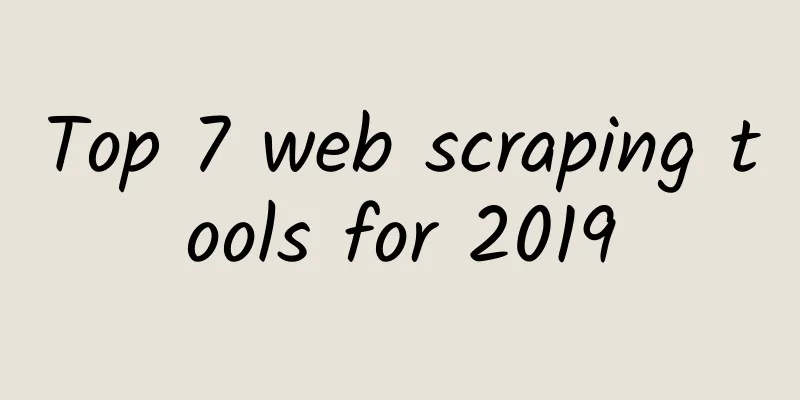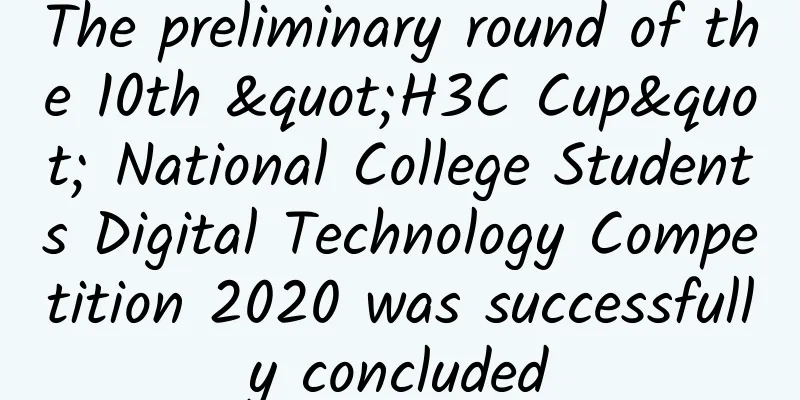Top 7 web scraping tools for 2019

|
The Internet is constantly flooded with new information, new design patterns, and a lot of c. Organizing this data into a unique library is not an easy task. However, there are a large number of excellent web scraping tools available. 1.ProxyCrawl Using Proxy Crawl API, you can crawl any website/platform on the Web. It has the advantages of proxy support, bypassing captchas, and crawling JavaScript pages based on dynamic content. It is free for 1000 requests, which is more than enough to explore the power of Proxy Crawl for complex content pages. 2. Scrapy Scrapy is an open source project that provides support for crawling the web. The Scrapy crawling framework does an excellent job of extracting data from websites and web pages. Most importantly, Scrapy can be used to mine data, monitor data patterns, and perform automated testing for large tasks. Powerful features can be integrated with ProxyCrawl***. With Scrapy, selecting content sources (HTML and XML) is a breeze thanks to built-in tools. It is also possible to use the Scrapy API to extend the functionality provided. 3. Grab Grab is a Python-based framework for creating custom Web Scraping rule sets. With Grab, you can create scraping mechanisms for small personal projects, or build large dynamic scraping tasks that can scale to millions of pages simultaneously. The built-in API provides methods to perform network requests and also handle scraped content. Another API provided by Grab is called Spider. Using the Spider API, you can create an asynchronous crawler using a custom class. 4. Ferret Ferret is a fairly new web scraper that has gained quite a bit of traction in the open source community. Ferret aims to provide a cleaner client-side scraping solution. For example, by allowing developers to write scrapers that don't have to rely on application state. In addition, Ferret uses a custom Declarative language to avoid the complexity of building a system. Instead, strict rules can be written to scrape data from any site. 5.X-Ray Scraping web pages using Node.js is very simple due to the availability of libraries like X-Ray, Osmosis, etc. 6. Diffbot Diffbot is a new player in the market. You don’t even have to write much code, as Diffbot’s AI algorithm can decipher structured data from website pages without the need for manual specification.
7. PhantomJS Cloud PhantomJS Cloud is a SaaS alternative to the PhantomJS browser. With PhantomJS Cloud, you can fetch data directly from inside web pages, generate visual files, and render pages in PDF documents. PhantomJS is a browser itself, which means you can load and execute page resources just like a browser. This is especially useful if your task at hand requires crawling many JavaScript-based websites. |
<<: The Current State and Future of IoT Connectivity
>>: Ruijie Smart Town E-Day Tour
Recommend
Wenku: 5G terminal connections have exceeded 200 million
On December 24, 2020, at a press conference held ...
In the era of full intelligence, adapt with intelligence | H3C shares its network innovation blueprint at the 4th Future Network Development Conference
From August 14 to 15, New H3C Group, a subsidiary...
The mobile phone number card market is too difficult to operate. Why is it so difficult? What should we do?
Yesterday, I was chatting with a friend who works...
Key considerations for deploying Wi-Fi 6
IT managers looking to benefit from Wi-Fi 6 techn...
Huawei releases SD-WAN private line solution to build enterprise wide area interconnection with ultimate experience
At HUAWEI CONNECT 2017, Huawei released the SD-WA...
Six predictions for the 5G market in 2020
2019 is the first year of 5G worldwide. More than...
Verizon installs 5G equipment outside homeowners' homes, sparking complaints
According to foreign media, the US telecommunicat...
Integrating SD-WAN and UCaaS has both benefits and challenges
Today, communications come in many forms, includi...
Wang Chunhui: 5G releases three major functions to drive China on the path of high-quality development
On June 6, 2019, the Ministry of Industry and Inf...
Have you fallen for the rumors and scams about 5G?
Since the birth of mankind, cutting-edge technolo...
It is necessary to draw a clear line between the capital push and capital speculation behind blockchain
In recent days, the most eye-catching and frequen...
4 cases, a whole article of valuable information! Make your edge computing not "edge"
Edge computing means different things to differen...
Introduction to MQTT protocol, MQTT is the standard messaging protocol for IoT (everyone in IoT must know)
MQTT (Message Queuing Telemetry Transport) is a &...
Qeru: $3/month KVM-3GB/40GB/5TB/Dallas Data Center
According to information from LET, Qeru recently ...
DediPath Summer Promotion: Los Angeles E3 servers start at $39 per month, New York servers start at $49 per month
DediPath has released its latest summer promotion...









